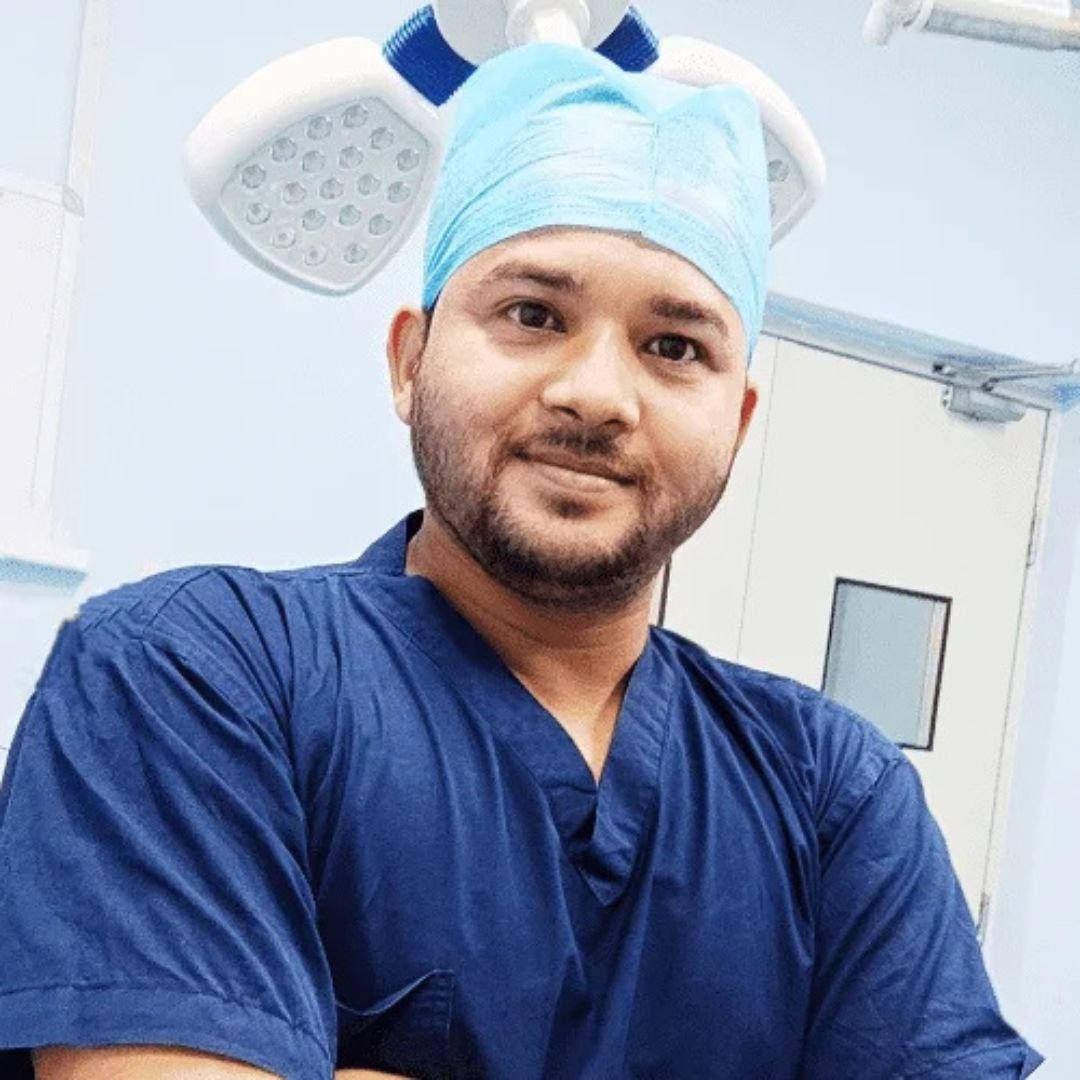What is a Tonsillectomy?
A tonsillectomy is a surgical procedure performed to remove the tonsils, which are two small glands located at the back of the throat. These glands play a role in the immune system, but they can become problematic when they are frequently infected or enlarged. The surgery is commonly recommended for individuals suffering from recurrent tonsillitis, sleep apnea due to enlarged tonsils, or other complications related to the tonsils. While tonsillectomy in adults is less common than in children, it is still a viable solution for those experiencing chronic throat infections or breathing difficulties.
The procedure is typically performed under general anesthesia and can be done using various techniques, including traditional surgery, laser-assisted methods, or coblation. Each method has its own advantages, and the choice depends on the patient’s condition and the surgeon’s expertise. Understanding the tonsillectomy position during surgery is crucial, as it ensures the procedure is performed safely and effectively.
Book Appointments With Our Expert Doctors Near You
- Get consultation for 50+ diseases across India
- In-person and online consultation with experienced doctors
- Extensive medical assistance throughout your treatment


Dr Ashish Sachdeva
MBBS, MS - General Surgery, General Surgeon, Bariatric Surgeon, Laparoscopic Surgeon
4.9/5
20 Years Experience
Vadodara, India

Dr. Tanmay Jain
General Surgeon, Laparoscopic Surgeon and Proctologist
4.9/5
12 Years Experience
Jaipur, India

Dr. Vikram Vasuniya
MBBS, MS (General Surgery) General Laparoscopic & Laser Surgeon, Laser Proctologist
4.9/5
14 Years Experience
Bhopal, India

Dr. Sujeet Kumar Bharti
MBBS, MS (General Surgery) General Laparoscopic & Laser Surgeon, Laser Proctologist
4.9/5
22 Years Experience
Patna, India
When is a Tonsils Operation (Tonsillectomy) Required?
A tonsillectomy is recommended when the tonsils cause significant health issues that cannot be managed through non-surgical treatments. Some of the common criteria for tonsillectomy include:
- Recurrent Tonsillitis: Frequent episodes of throat infections (more than 5-7 times a year) that do not respond to antibiotics.
- Chronic Tonsillitis: Persistent infection or inflammation of the tonsils that lasts for months.
- Enlarged Tonsils: Tonsils that are so large they obstruct breathing, leading to sleep apnea or difficulty swallowing.
- Peritonsillar Abscess: A severe infection that forms around the tonsils, often requiring emergency treatment.
- Tonsil Stones: Persistent formation of calcified deposits in the tonsils, causing bad breath and discomfort.
- Other Complications: Conditions like rheumatic fever or kidney inflammation linked to recurrent strep throat.
For tonsillectomy in adults, the decision is often based on the severity of symptoms and their impact on quality of life. Adults may experience more tonsillectomy complications compared to children, making it essential to weigh the risks and benefits carefully.
Disease name
Tonsillitis
Surgery name
Tonsillectomy
Duration
1-2 Hours
Treated by
ENT Surgeon (Otolaryngologists)
Types of Tonsils Removal Surgery (Tonsillectomy)
There are several methods for performing a tonsillectomy, each with its own set of advantages and considerations. The choice of technique depends on the patient’s age, medical history, and the surgeon’s preference. Here are the most common types:
- Traditional Tonsillectomy: This method involves the use of a scalpel to remove the tonsils. It is a well-established technique but may involve a longer recovery period.
- Laser Tonsillectomy: A laser is used to vaporize or cut the tonsil tissue. This method is precise and minimizes bleeding, but the laser tonsillectomy cost in India may be higher compared to traditional methods.
- Coblation Tonsillectomy: This technique uses radiofrequency energy and saline to remove the tonsils. It is known for causing less pain and faster recovery.
- Electrocautery: This method uses an electric current to cut and cauterize the tonsils, reducing bleeding during the procedure.
- Cold Knife (Steel) Dissection: The tonsils are removed using a surgical instrument without the use of heat. This method is less common today but may still be used in certain cases.
Each method has its own set of tonsillectomy complications, and your surgeon will recommend the best option based on your specific needs.
Diagnosis Before Tonsillectomy Surgery
Before undergoing a tonsillectomy, a thorough diagnosis is essential to determine whether the surgery is necessary. The diagnostic process typically includes:
- Medical History Review: Your doctor will ask about your symptoms, frequency of throat infections, and any previous treatments.
- Physical Examination: The doctor will examine your throat, neck, and ears to assess the size and condition of your tonsils.
- Throat Swab Test: A swab may be taken to check for bacterial infections like strep throat.
- Sleep Study (Polysomnography): If sleep apnea is suspected, a sleep study may be conducted to evaluate breathing patterns during sleep.
- Blood Tests: These may be done to check for underlying conditions or infections.
- Imaging Tests: In rare cases, imaging tests like X-rays or CT scans may be required to assess the extent of tonsil enlargement or infection.
The results of these tests will help determine whether you meet the criteria for tonsillectomy and which surgical method is most suitable for you.
What Happens During Tonsils Removal Procedure?
The tonsillectomy procedure is typically performed under general anesthesia, meaning you will be asleep and pain-free during the surgery. Here’s a step-by-step overview of what happens:
- Anesthesia Administration: The anesthesiologist will administer general anesthesia to ensure you are unconscious and comfortable throughout the procedure.
- Positioning: You will be placed in the tonsillectomy position, usually lying on your back with your head slightly tilted backward. This position provides the surgeon with optimal access to the tonsils.
- Tonsil Removal: The surgeon will use the chosen method (scalpel, laser, coblation, etc.) to remove the tonsils. The procedure usually takes about 30-60 minutes, depending on the technique used.
- Bleeding Control: Any bleeding from the surgical site will be controlled using cauterization or sutures.
- Recovery Room: After the surgery, you will be moved to a recovery room where medical staff will monitor your vital signs as you wake up from anesthesia.
The procedure is generally safe, but like any surgery, it carries some risks. Understanding the potential tonsillectomy complications and following your surgeon’s instructions can help minimize these risks.
Benefits of Tonsil Surgery for Tonsillitis
A tonsillectomy can provide significant relief for individuals suffering from chronic or recurrent tonsillitis. Some of the key benefits include:
- Reduced Frequency of Infections: Removing the tonsils can significantly reduce the number of throat infections you experience.
- Improved Breathing: For those with enlarged tonsils, the surgery can alleviate breathing difficulties and improve sleep quality.
- Better Quality of Life: Chronic tonsillitis can affect your ability to eat, speak, and sleep comfortably. A tonsillectomy can restore your overall well-being.
- Prevention of Complications: The surgery can prevent serious complications like peritonsillar abscess or rheumatic fever.
- Long-Term Relief: While the recovery period may be uncomfortable, the long-term benefits often outweigh the temporary discomfort.
For tonsillectomy in adults, the benefits can be life-changing, especially for those who have struggled with chronic throat issues for years.
Preparation Before Tonsils Surgery
Proper preparation is crucial to ensure a smooth tonsillectomy procedure and recovery. Here’s a detailed guide on how to prepare for your surgery to remove the tonsils:
- Consultation with Your Surgeon: Before the surgery, you’ll have a detailed consultation with your surgeon. This is the time to discuss your medical history, any medications you’re taking, and any concerns you may have. Your surgeon will explain the tonsillectomy position during the procedure and what to expect during recovery.
- Medical Evaluation: Your doctor may order blood tests, a physical examination, or other diagnostic tests to ensure you’re in good health for the surgery. This step is especially important for tonsillectomy in adults, as adults may have underlying health conditions that need to be managed before surgery.
- Medication Adjustments: If you’re taking blood thinners or other medications, your doctor may ask you to stop them a few days before the surgery to reduce the risk of bleeding. Always follow your surgeon’s instructions regarding medication.
- Fasting Before Surgery: You’ll need to avoid eating or drinking for at least 6-8 hours before the procedure. This is to prevent complications related to anesthesia.
- Arrange for Post-Operative Care: Since you’ll need rest and assistance after the surgery, arrange for someone to drive you home and stay with you for the first few days. Proper post-operative care for tonsillectomy is essential for a smooth recovery.
- Prepare Your Home: Stock up on soft foods, cold liquids, and pain relievers (as recommended by your doctor). Create a comfortable recovery space where you can rest without interruptions.
- Mental Preparation: Understanding the procedure, potential tonsillectomy complications, and the recovery process can help reduce anxiety. Don’t hesitate to ask your surgeon any questions you may have.
Recovery After Tonsillectomy
Recovery after a tonsillectomy varies from person to person, but most people can expect to return to normal activities within 1-2 weeks. Here’s a detailed look at what to expect during the recovery period:
- Immediate Post-Operative Period: After the surgery, you’ll be monitored in a recovery room until the effects of anesthesia wear off. You may experience a sore throat, difficulty swallowing, and mild pain. These symptoms are normal and can be managed with prescribed medications.
- Pain Management: Throat pain is common after a tonsillectomy, especially during the first week. Your doctor will prescribe pain relievers and may recommend cold foods like ice cream or popsicles to soothe the throat.
- Dietary Restrictions: Stick to soft, bland foods like mashed potatoes, yogurt, and soup for the first few days. Avoid spicy, acidic, or crunchy foods that could irritate the surgical site. Staying hydrated is crucial, so drink plenty of water and other clear liquids.
- Activity Restrictions: Rest is essential during the first week of recovery. Avoid strenuous activities, heavy lifting, or anything that could increase the risk of bleeding. Gradually resume normal activities as you start to feel better.
- Monitoring for Complications: While tonsillectomy complications are rare, it’s important to watch for signs of excessive bleeding, high fever, or severe pain. Contact your doctor immediately if you experience any of these symptoms.
- Follow-Up Appointments: Your surgeon will schedule a follow-up visit to check your healing progress. This is also an opportunity to discuss any concerns or questions you may have about your recovery.
- Long-Term Recovery: Most people recover fully within 2 weeks, but it may take longer for tonsillectomy in adults due to slower healing rates. Be patient and follow your doctor’s advice to ensure a smooth recovery.
Risk & Complications Associated With Tonsillectomy
While a tonsillectomy is generally safe, like any surgery, it carries some risks. Understanding these potential tonsillectomy complications can help you make an informed decision and take steps to minimize risks:
- Bleeding: This is the most common complication and can occur during or after the surgery. In rare cases, severe bleeding may require additional medical intervention.
- Infection: Although rare, infections can occur at the surgical site. Symptoms include fever, increased pain, and swelling. Prompt treatment with antibiotics is usually effective.
- Reaction to Anesthesia: Some people may experience nausea, vomiting, or allergic reactions to anesthesia. These side effects are typically mild and short-lived.
- Dehydration: Difficulty swallowing after the surgery can lead to dehydration. Drinking plenty of fluids and using a humidifier can help prevent this.
- Changes in Voice: Temporary changes in voice tone or quality may occur due to swelling or irritation of the throat tissues. This usually resolves as the healing progresses.
- Scarring: In rare cases, scarring may occur at the surgical site, leading to long-term throat discomfort or changes in swallowing.
- Delayed Healing: Tonsillectomy in adults often involves a longer healing period compared to children. Adults may also experience more pain and a higher risk of complications.
By following your surgeon’s instructions and adhering to proper post-operative care for tonsillectomy, you can significantly reduce the risk of these complications.
Lifestyle Changes After Tonsils Removal Surgery
After a tonsillectomy, certain lifestyle adjustments can help promote healing and improve your overall well-being. Here are some recommendations:
- Dietary Adjustments: Stick to soft, easy-to-swallow foods during the initial recovery period. Gradually reintroduce solid foods as your throat heals. Avoid spicy, acidic, or crunchy foods that could irritate the surgical site.
- Hydration: Drink plenty of fluids to stay hydrated and keep your throat moist. Cold liquids like water, herbal teas, and broths can be particularly soothing.
- Rest and Relaxation: Give your body time to heal by getting plenty of rest. Avoid strenuous activities and take time off work or school if needed.
- Oral Hygiene: Maintain good oral hygiene to prevent infections. Gargle with salt water (as recommended by your doctor) to keep the throat clean and reduce discomfort.
- Avoid Irritants: Stay away from smoke, pollution, and other irritants that could aggravate your throat. If you smoke, consider quitting to improve your overall health.
- Monitor Your Health: Keep an eye out for any signs of tonsillectomy complications, such as excessive bleeding, fever, or severe pain. Contact your doctor if you notice anything unusual.
- Follow Medical Advice: Adhere to all post-operative instructions provided by your surgeon. Attend follow-up appointments and take prescribed medications as directed.
These lifestyle changes can help ensure a smooth recovery and improve your quality of life after surgery to remove the tonsils.
Tonsillectomy Cost in India
The cost of a tonsillectomy can vary depending on several factors, including the surgical technique, the hospital’s location, and the surgeon’s experience. While we don’t provide specific figures, it’s important to understand the factors that influence the tonsillectomy surgery cost:
- Type of Surgery: Traditional methods may be less expensive than advanced techniques like laser tonsillectomy. The laser tonsillectomy cost in India may be higher due to the use of specialized equipment.
- Hospital Facilities: The quality of the hospital, the availability of advanced medical equipment, and the level of care provided can impact the overall cost.
- Surgeon’s Expertise: Highly experienced surgeons may charge more for their services, but their expertise can reduce the risk of tonsillectomy complications.
- Geographical Location: The cost of medical procedures can vary significantly between cities and regions. Metropolitan areas may have higher costs compared to smaller towns.
- Insurance Coverage: Check whether your health insurance covers tonsillectomy surgery cost. Some policies may cover the procedure if it’s deemed medically necessary.
To get a clear idea of the expenses, it’s best to consult with your healthcare provider and insurance company. They can provide detailed information tailored to your specific situation.
Tonsils Removal Surgery Coverage Under Insurance
Understanding whether your tonsillectomy is covered by insurance is an important step in planning for the procedure. Here’s a detailed guide to help you navigate insurance coverage for surgery to remove the tonsils:
- Medical Necessity: Most insurance companies cover tonsillectomy surgery cost if the procedure is deemed medically necessary. This typically includes cases of recurrent tonsillitis, sleep apnea, or other complications that significantly impact your health.
- Pre-Authorization: Before scheduling the surgery, check with your insurance provider to determine if pre-authorization is required. This involves submitting medical records and diagnostic test results to prove the necessity of the procedure.
- In-Network vs. Out-of-Network: Ensure that your surgeon and hospital are within your insurance network. Out-of-network providers may result in higher out-of-pocket costs.
- Coverage Limits: Review your policy to understand any coverage limits or exclusions. Some plans may cover only specific types of tonsillectomy procedures, such as traditional surgery but not laser tonsillectomy.
- Out-of-Pocket Costs: Even with insurance, you may be responsible for co-pays, deductibles, or co-insurance. Ask your insurance provider for a detailed breakdown of expected costs.
- Appeals Process: If your insurance denies coverage, you have the right to appeal the decision. Work with your healthcare provider to gather additional documentation that supports the medical necessity of the surgery.
- Alternative Options: If insurance coverage is limited, explore other options such as payment plans or medical loans. Some hospitals offer financial assistance programs for eligible patients.
By understanding your insurance coverage, you can better plan for the financial aspects of your tonsillectomy and avoid unexpected expenses.
Non-surgical Treatment of Tonsil Infection (Medications and Home Remedies)
While a tonsillectomy is often the best solution for chronic or severe tonsil issues, non-surgical treatments can be effective for mild to moderate cases. Here’s a detailed look at non-surgical options for managing tonsil infections:
- Antibiotics: For bacterial infections like strep throat, antibiotics are the first line of treatment. It’s important to complete the full course of medication to prevent recurrence.
- Pain Relievers: Over-the-counter pain relievers like ibuprofen or acetaminophen can help reduce throat pain and inflammation.
- Anti-inflammatory Medications: These can help reduce swelling and discomfort associated with tonsillitis.
- Throat Lozenges and Sprays: These provide temporary relief from sore throat symptoms by numbing the throat and reducing irritation.
- Salt Water Gargle: Gargling with warm salt water can help soothe the throat, reduce inflammation, and remove bacteria.
- Hydration: Drinking plenty of fluids helps keep the throat moist and flushes out toxins. Warm teas, broths, and water are excellent choices.
- Humidifiers: Using a humidifier in your home can add moisture to the air, reducing throat dryness and irritation.
- Rest: Adequate rest allows your body to fight off infections more effectively.
- Avoid Irritants: Stay away from smoke, pollution, and other irritants that can worsen throat symptoms.
- Herbal Remedies: Some people find relief using herbal remedies like honey, ginger, or turmeric. However, consult your doctor before trying any new treatments.
While these non-surgical treatments can be effective, they may not provide long-term relief for chronic conditions. If your symptoms persist or worsen, consult your doctor to discuss whether a tonsillectomy is necessary.
Questions to Ask Your Surgeon
Before undergoing a tonsillectomy, it’s important to have a clear understanding of the procedure, risks, and recovery process. Here are some key questions to ask your surgeon:
- What are the criteria for tonsillectomy in my case?
- Understand why the surgery is recommended and whether non-surgical options have been considered.
- What type of tonsillectomy procedure do you recommend?
- Discuss the different methods (traditional, laser, coblation) and why a particular technique is best for you.
- What are the potential tonsillectomy complications?
- Learn about the risks and how they can be minimized.
- What is the expected recovery time?
- Get a detailed timeline for recovery and what to expect during each phase.
- What should I do to prepare for the surgery?
- Ask about pre-operative instructions, including fasting, medication adjustments, and lifestyle changes.
- What kind of post-operative care for tonsillectomy will I need?
- Understand the steps you’ll need to take to ensure a smooth recovery.
- What are the signs of complications I should watch for?
- Know when to seek medical attention during the recovery period.
- What is the tonsillectomy surgery cost, and what does it include?
- Get a breakdown of the costs and check if your insurance covers the procedure.
- What is your experience with tonsillectomy in adults?
- Ensure your surgeon has experience performing the procedure on adults, as it can be more complex than in children.
- Are there any lifestyle changes I should make before or after the surgery?
- Discuss dietary restrictions, activity limitations, and other adjustments.
- Discuss dietary restrictions, activity limitations, and other adjustments.
Asking these questions will help you feel more confident and informed about your tonsillectomy.
Lifestyle Changes After Tonsils Removal Surgery
Recovering from a tonsillectomy requires more than just physical healing; it also involves making certain lifestyle adjustments to ensure a smooth recovery and long-term well-being. Here’s an expanded guide on the lifestyle changes you should consider after surgery to remove the tonsils:
- Dietary Adjustments:
- Soft Foods: For the first week or two, stick to soft, easy-to-swallow foods like mashed potatoes, yogurt, applesauce, and oatmeal. Avoid spicy, acidic, or crunchy foods that could irritate the surgical site.
- Cold Foods: Cold foods like ice cream, popsicles, and chilled soups can help soothe your throat and reduce swelling.
- Hydration: Drink plenty of fluids, such as water, herbal teas, and broths, to stay hydrated and keep your throat moist. Avoid carbonated or caffeinated beverages, as they can cause discomfort.
- Rest and Relaxation:
- Adequate Sleep: Ensure you get plenty of rest to help your body heal. Sleep with your head elevated to reduce swelling and improve breathing.
- Avoid Strain: Refrain from strenuous activities, heavy lifting, or anything that could increase the risk of bleeding. Gradually resume normal activities as you start to feel better.
- Oral Hygiene:
- Gentle Brushing: Brush your teeth gently to avoid irritating the surgical site. Use a soft-bristled toothbrush and avoid mouthwashes that contain alcohol.
- Salt Water Gargle: Gargling with warm salt water can help keep the throat clean and reduce discomfort. Do this only if recommended by your doctor.
- Avoid Irritants:
- Smoke and Pollution: Stay away from smoke, pollution, and other irritants that could aggravate your throat. If you smoke, consider quitting to improve your overall health.
- Dry Air: Use a humidifier in your home to add moisture to the air, reducing throat dryness and irritation.
- Monitor Your Health:
- Watch for Complications: Keep an eye out for any signs of tonsillectomy complications, such as excessive bleeding, fever, or severe pain. Contact your doctor if you notice anything unusual.
- Follow-Up Appointments: Attend all scheduled follow-up appointments to ensure your recovery is progressing as expected.
- Mental and Emotional Well-being:
- Stay Positive: Recovery can be challenging, but maintaining a positive attitude can help you get through it. Engage in activities that make you happy and relaxed.
- Seek Support: Don’t hesitate to reach out to friends, family, or support groups if you’re feeling overwhelmed.
By making these lifestyle changes, you can promote healing and improve your quality of life after a tonsillectomy.
Tonsillectomy Cost in India
The cost of a tonsillectomy in India can vary widely depending on several factors. Here’s an expanded look at what influences the tonsillectomy surgery cost and how you can plan for it:
- Type of Surgery:
- Traditional Tonsillectomy: This method is generally less expensive but may involve a longer recovery period.
- Laser Tonsillectomy: The laser tonsillectomy cost in India is typically higher due to the use of advanced technology and specialized equipment. However, it may offer benefits like reduced bleeding and faster recovery.
- Coblation Tonsillectomy: This technique uses radiofrequency energy and saline to remove the tonsils. It is known for causing less pain and faster recovery but may be more expensive.
- Hospital Facilities:
- Quality of Care: The quality of the hospital, the availability of advanced medical equipment, and the level of care provided can impact the overall cost.
- Location: The cost of medical procedures can vary significantly between cities and regions. Metropolitan areas may have higher costs compared to smaller towns.
- Surgeon’s Expertise:
- Experience and Reputation: Highly experienced surgeons may charge more for their services, but their expertise can reduce the risk of tonsillectomy complications.
- Consultation Fees: Some surgeons may charge additional fees for consultations and follow-up visits.
- Geographical Location:
- Urban vs. Rural: The cost of living and medical services in urban areas is generally higher than in rural areas. This can affect the overall cost of the surgery.
- Insurance Coverage:
- Policy Details: Check whether your health insurance covers tonsillectomy surgery cost. Some policies may cover the procedure if it’s deemed medically necessary.
- Out-of-Pocket Costs: Even with insurance, you may be responsible for co-pays, deductibles, or co-insurance. Ask your insurance provider for a detailed breakdown of expected costs.
- Additional Expenses:
- Pre-Operative Tests: Diagnostic tests like blood tests, throat swabs, and imaging studies may add to the overall cost.
- Post-Operative Care: Medications, follow-up visits, and any additional treatments needed during recovery can also contribute to the total expense.
To get a clear idea of the expenses, it’s best to consult with your healthcare provider and insurance company. They can provide detailed information tailored to your specific situation.
Tonsils Removal Surgery Coverage Under Insurance
Understanding whether your tonsillectomy is covered by insurance is an important step in planning for the procedure. Here’s an expanded guide to help you navigate insurance coverage for surgery to remove the tonsils:
- Medical Necessity:
- Documentation: Most insurance companies require detailed documentation to prove the medical necessity of the surgery. This includes medical records, diagnostic test results, and a letter of recommendation from your doctor.
- Criteria for Tonsillectomy: Ensure that your condition meets the criteria for tonsillectomy as defined by your insurance policy. This typically includes recurrent tonsillitis, sleep apnea, or other complications that significantly impact your health.
- Pre-Authorization:
- Approval Process: Before scheduling the surgery, check with your insurance provider to determine if pre-authorization is required. This involves submitting medical records and diagnostic test results to prove the necessity of the procedure.
- Timeline: Start the pre-authorization process well in advance to avoid delays in scheduling your surgery.
- In-Network vs. Out-of-Network:
- Network Providers: Ensure that your surgeon and hospital are within your insurance network. Out-of-network providers may result in higher out-of-pocket costs.
- Referrals: Some insurance plans require a referral from your primary care physician to see a specialist or undergo surgery.
- Coverage Limits:
- Policy Details: Review your policy to understand any coverage limits or exclusions. Some plans may cover only specific types of tonsillectomy procedures, such as traditional surgery but not laser tonsillectomy.
- Annual Maximums: Check if your policy has an annual maximum for surgical procedures and how much of it has already been used.
- Out-of-Pocket Costs:
- Co-Pays and Deductibles: Even with insurance, you may be responsible for co-pays, deductibles, or co-insurance. Ask your insurance provider for a detailed breakdown of expected costs.
- Payment Plans: Some hospitals offer payment plans or financial assistance programs for eligible patients.
- Appeals Process:
- Denial of Coverage: If your insurance denies coverage, you have the right to appeal the decision. Work with your healthcare provider to gather additional documentation that supports the medical necessity of the surgery.
- Timely Filing: Ensure that all appeals are filed within the timeframe specified by your insurance policy.
- Alternative Options:
- Financial Assistance: Explore other options such as payment plans or medical loans. Some hospitals offer financial assistance programs for eligible patients.
- Government Programs: Check if you qualify for government programs that provide financial assistance for medical procedures.
By understanding your insurance coverage, you can better plan for the financial aspects of your tonsillectomy and avoid unexpected expenses.
Non-surgical Treatment of Tonsil Infection (Medications and Home Remedies)
While a tonsillectomy is often the best solution for chronic or severe tonsil issues, non-surgical treatments can be effective for mild to moderate cases. Here’s an expanded look at non-surgical options for managing tonsil infections:
- Antibiotics:
- Bacterial Infections: For bacterial infections like strep throat, antibiotics are the first line of treatment. Commonly prescribed antibiotics include penicillin, amoxicillin, and erythromycin.
- Full Course: It’s crucial to complete the full course of antibiotics, even if symptoms improve before the medication is finished. This helps prevent recurrence and antibiotic resistance.
- Pain Relievers:
- Over-the-Counter Options: Medications like ibuprofen (Advil) and acetaminophen (Tylenol) can help reduce throat pain and inflammation.
- Dosage: Follow the recommended dosage instructions and consult your doctor if you have any underlying health conditions that may affect your ability to take these medications.
- Anti-inflammatory Medications:
- Reducing Swelling: Anti-inflammatory drugs can help reduce swelling and discomfort associated with tonsillitis.
- Prescription Options: In some cases, your doctor may prescribe stronger anti-inflammatory medications.
- Throat Lozenges and Sprays:
- Temporary Relief: Throat lozenges and sprays can provide temporary relief from sore throat symptoms by numbing the throat and reducing irritation.
- Active Ingredients: Look for products containing ingredients like benzocaine, menthol, or phenol.
- Salt Water Gargle:
- Soothing Effect: Gargling with warm salt water can help soothe the throat, reduce inflammation, and remove bacteria.
- How to Prepare: Mix 1/2 teaspoon of salt in a glass of warm water and gargle several times a day.
- Hydration:
- Fluid Intake: Drinking plenty of fluids helps keep the throat moist and flushes out toxins. Warm teas, broths, and water are excellent choices.
- Avoid Dehydration: Dehydration can worsen symptoms, so make sure to drink enough fluids throughout the day.
- Humidifiers:
- Adding Moisture: Using a humidifier in your home can add moisture to the air, reducing throat dryness and irritation.
- Clean Regularly: Ensure the humidifier is cleaned regularly to prevent the growth of mold and bacteria.
- Rest:
- Adequate Sleep: Adequate rest allows your body to fight off infections more effectively. Aim for 7-9 hours of sleep per night.
- Avoid Overexertion: Avoid strenuous activities that can weaken your immune system.
- Avoid Irritants:
- Smoke and Pollution: Stay away from smoke, pollution, and other irritants that can worsen throat symptoms.
- Allergens: Identify and avoid allergens that may trigger throat irritation.
- Herbal Remedies:
- Natural Options: Some people find relief using herbal remedies like honey, ginger, or turmeric. However, consult your doctor before trying any new treatments.
- Honey and Lemon: A mixture of honey and lemon in warm water can soothe the throat and provide relief.
While these non-surgical treatments can be effective, they may not provide long-term relief for chronic conditions. If your symptoms persist or worsen, consult your doctor to discuss whether a tonsillectomy is necessary.
FAQ
You Can Find All Answers Here
While the surgery itself is painless due to anesthesia, you may experience throat pain during recovery. Pain relievers and cold foods can help manage discomfort.
The procedure typically takes 30-60 minutes, depending on the technique used.
You’ll be lying on your back with your head slightly tilted backward to provide the surgeon with optimal access to the tonsils.
Yes, tonsillectomy in adults is safe and effective, though recovery may take longer compared to children.
Bleeding, infection, and reaction to anesthesia are the most common risks.
Most people recover within 1-2 weeks, but it may take longer for adults.
Most tonsillectomy procedures are performed on an outpatient basis, meaning you can go home the same day.
Stick to soft, cold foods like ice cream, yogurt, and mashed potatoes during the initial recovery period.
Laser techniques may offer advantages like reduced bleeding and faster recovery, but the laser tonsillectomy cost in India may be higher.
Avoid strenuous activities for at least 2 weeks to prevent complications.
Quick Links
Popular Surgeries
Find Us
© Copyright BharatKare 2025. All Right Reserved.



